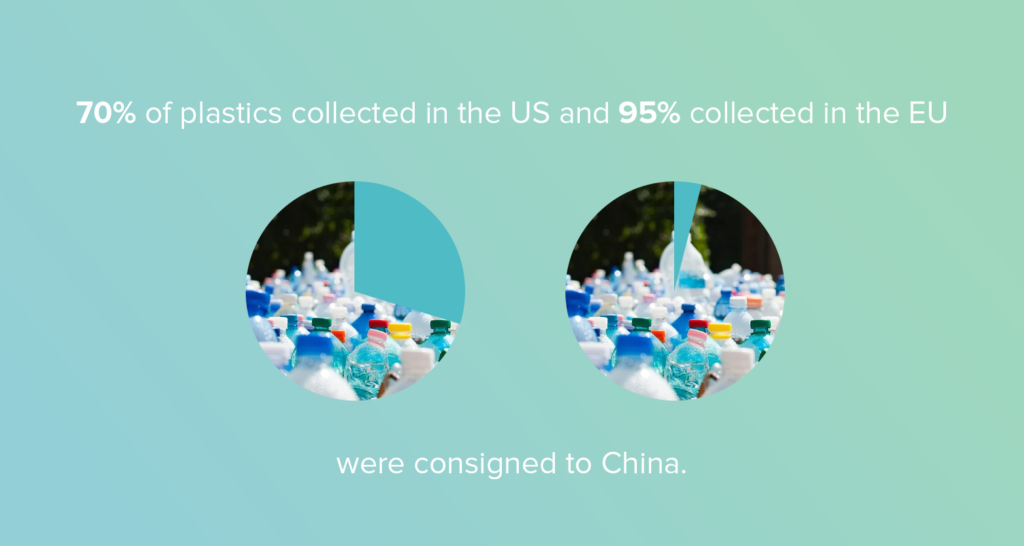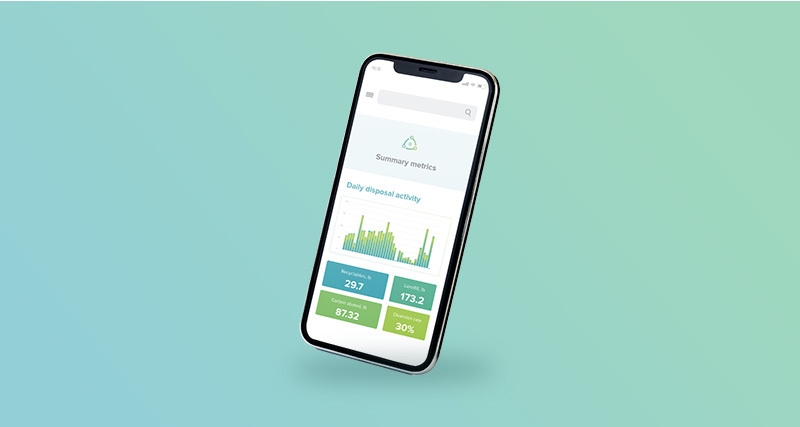As the issues of smart waste management and recycling have become increasingly pressing, so has the need to find innovative recycling solutions. AI automation has improved many of our systems, so the question is, can AI help save a failing recycling system?
Despite the efforts of individuals, businesses, and governments to reduce waste and boost recycling, the recycling industry struggles with many challenges. Artificial intelligence (AI) can solve these problems, from inefficient sorting to analytics and awareness. We can expect improved waste sorting, real-time monitoring, predictive maintenance, and more from AI.
The State of Recycling Today
Did you know that plastic was first invented in 1907 by a Belgian chemist, Leo Baekeland, but plastic recycling didn’t start until 1970?
Starting in the 1990s, more than half of the plastic waste from wealthier countries was being exported to lower-income countries for processing and recycling. Most of these plastics (95 percent collected in the EU) went to China. Then, in 2018, China implemented a policy to limit materials it would accept for recycling.
China’s ban on importing waste has resulted in a surplus of recyclables in the US and other countries. Since waste management has become more expensive, there’s an increased focus on domestic recycling and an emphasis on reducing the waste produced and finding more sustainable solutions.

Challenges of the Recycling System
Manual Sorting and Inefficient Processing
Currently, most recycling facilities rely on manual labor to sort the waste stream and separate recyclables from non-recyclable materials. Manual sorting is not just time-consuming but also prone to human error. Human workers often make mistakes when separating recyclables from non-recyclables, which lowers the quality of recyclable materials. In addition, manual sorting is a dirty, dull, and often underpaid job.
Lack of Public Participation
Many people still don’t know what materials can be recycled or how to recycle them properly, resulting in a significant loss of valuable circular materials. Despite current efforts, recycling education needs more widespread support.
Limited Recycling Capabilities
Since China’s ban, the need for recycling facilities has been more critical. However, many regions lack recycling infrastructure, meaning that recyclables must be transported long distances to be processed. This increases recycling costs, reduces efficiency, and leaves a significant carbon footprint. Our current recovery system simply can’t keep up with the volume of new products and subsequent waste produced.

AI’s Contributions to Recycling
Improved Sorting Methods
AI-powered robots can sort recyclables from non-recyclables faster and more efficiently, solving the challenges of manual sorting. A human worker sorts 30 to 40 items per minute, while AI-powered machines can sort as fast as 160 items per minute without a decline in quality over time. Innovative recycling methods harnessing the power of AI can use features like computer vision to identify any contamination present in waste items, further reducing the margin of error in sorting. Autonomous recycling bins like TrashBot also eliminate contamination at the source by sorting waste when it is thrown away.
Real-Time Monitoring and Analysis
AI can help material recycling facilities (MRFs) monitor their performance in real-time, predict equipment that is likely to fail, and identify areas of improvement. Facilities, in turn, can improve the efficiency of their operation and reduce downtime.
Over time, AI can analyze data and predict needs and changes in the waste stream. Armed with the intelligence that AI can provide, communities will be able to plan and optimize waste collection and management.
Increased Public Awareness
AI can design educational outreach programs that will inform the public about recycling. It also has the potential to increase public perception and improve the overall quality of recycling programs. Innovative recycling bins like TrashBot have built-in screens and content management systems that can help educate the audience by showing content relevant to recycling and reflecting current waste trends.

Supporting AI Automation
While recycling is a relatively new concept, reuse and repurposing are centuries old. Matanya Horowitz, founder and CEO of AMP Robotics, envisions using AI to leverage the full value of waste products. When the Plains Indians killed a cow, he says, they didn’t just eat the meat and throw the rest away. Instead, they would utilize every part of a buffalo they killed. Horowitz says:
“You have all this material that society produces—plastic bottles, pieces of wood, drywall—and people pay for it, but then somehow it has no value once it’s in the dumpster. Why aren’t we using every part of buffalo?”
AI automation has the potential to help to save a failing recycling system and revolutionize waste management. It can drive positive perceptions and create a more sustainable future by improving recycling practices and the efficacy of the overall system. Supporting AI automation can boost systems along the entire waste stream.

